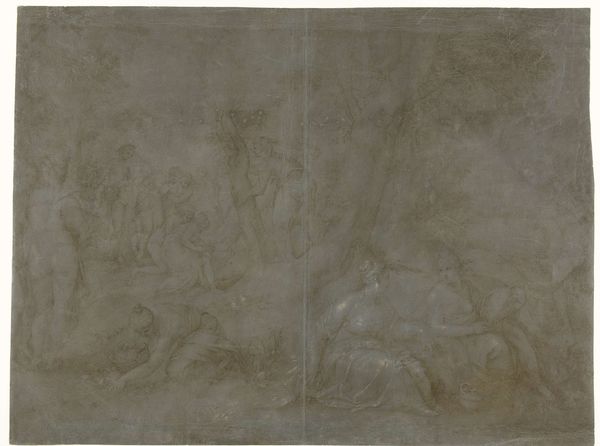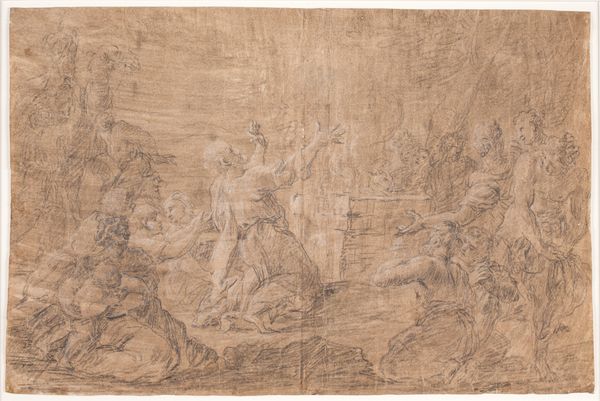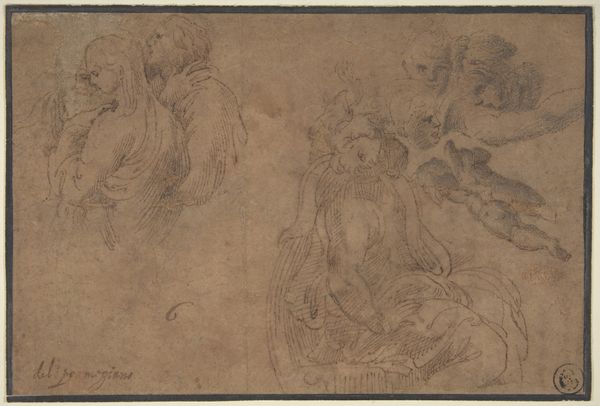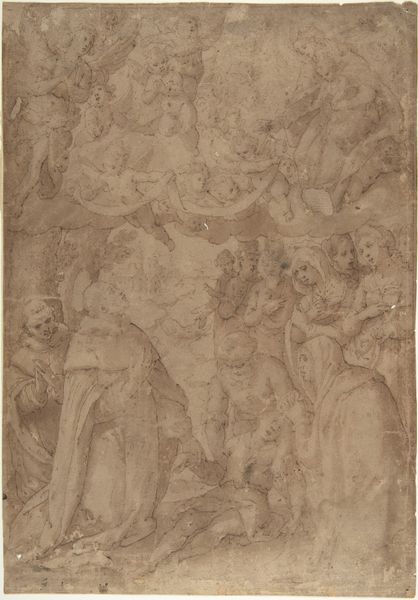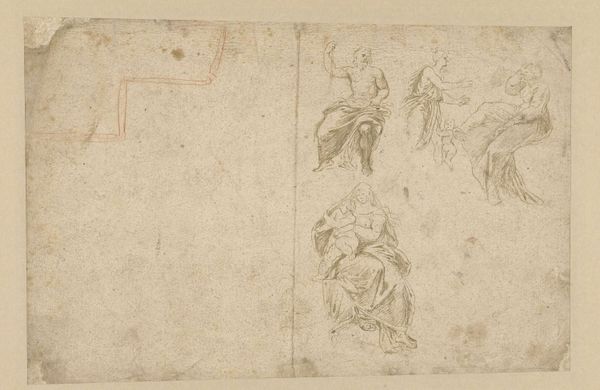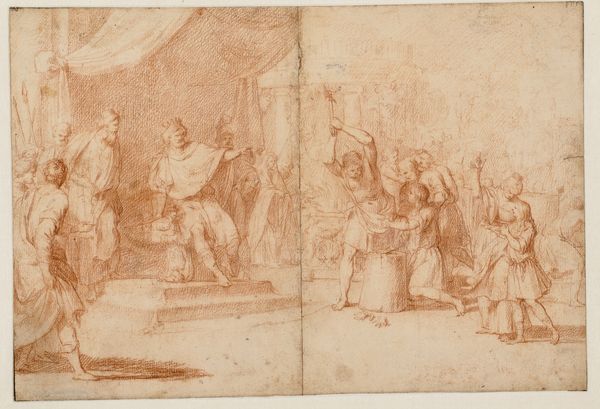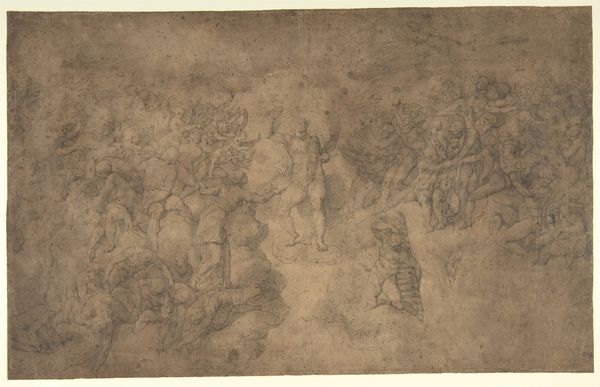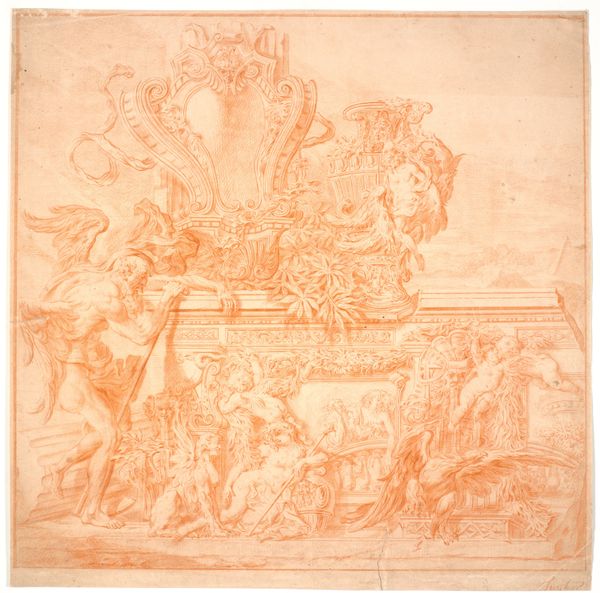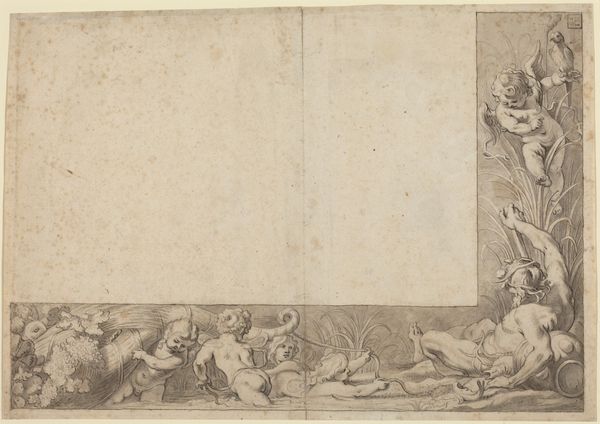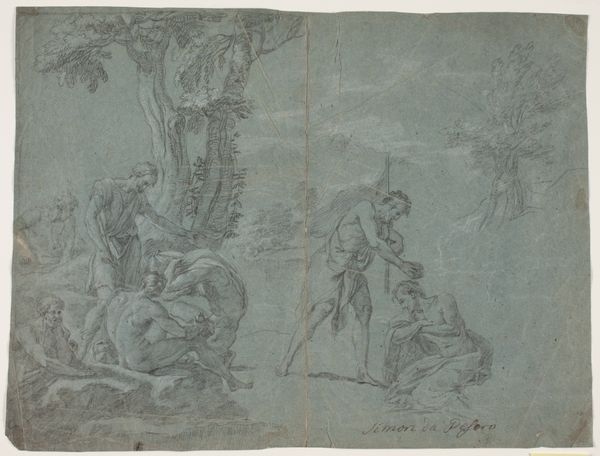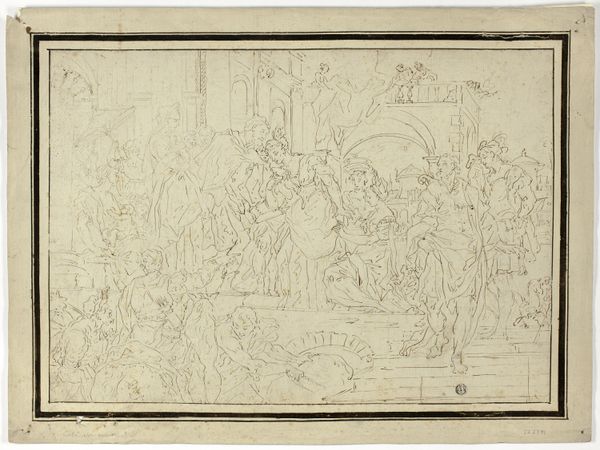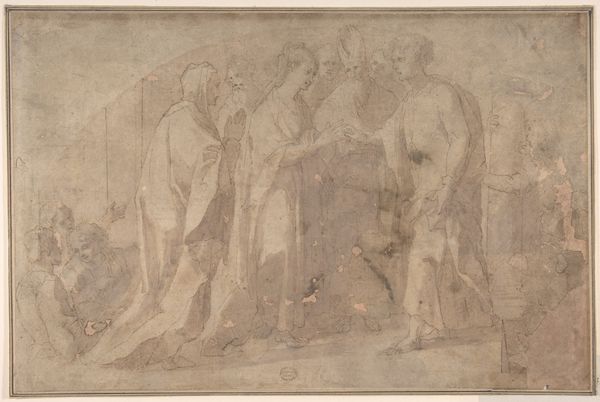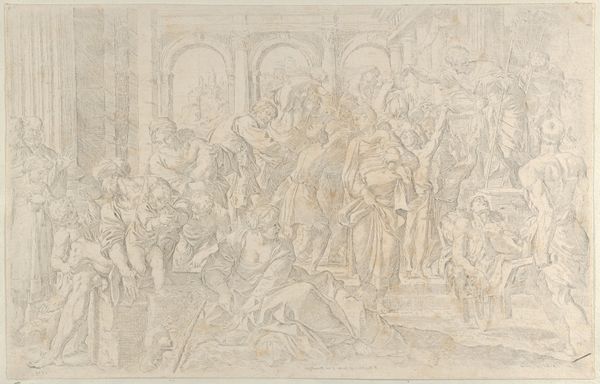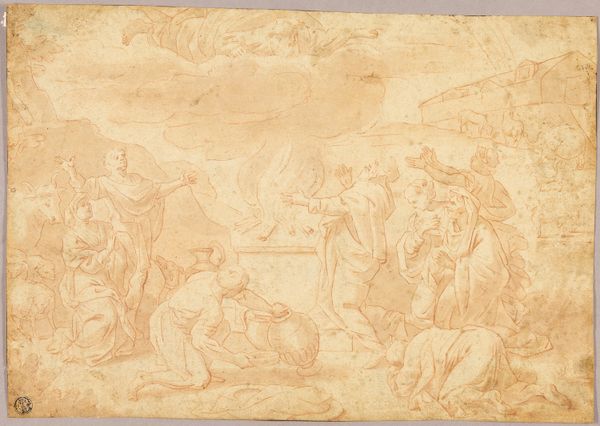
drawing, print, paper, chalk
#
portrait
#
drawing
#
narrative-art
#
baroque
# print
#
paper
#
chalk
#
academic-art
Dimensions: 426 × 531 mm
Copyright: Public Domain
Curator: Drawn in chalk on paper, this is Gerard de Lairesse’s interpretation of the Old Testament scene, “Joseph Recognized by His Brothers,” which now resides at the Art Institute of Chicago. Editor: There’s something melancholic about this sketch; despite being a scene of recognition, it’s so somber, almost ghostly, rendered in these faded earth tones. Curator: Indeed. Lairesse, a figure deeply embedded in the artistic and political landscape of his time, engages with biblical narratives to, in some ways, mirror power dynamics. Consider the story of Joseph, sold into slavery by his brothers, who then rises in Egyptian society. It becomes a poignant allegory for social mobility, even in systems designed to oppress. Editor: I’m struck by how Lairesse uses clothing to denote power. Look at the crisp lines in Joseph’s garments against the somewhat amorphous robes on the brothers; they're almost cowering in their textiles, their positions underscored by how little detail we see in their clothes and postures. Is it intended as condemnation? Curator: Perhaps it's more of an examination of desperation and resentment. But it can also be linked to Lairesse’s engagement with the classicism of the French Academy. You see him employing historical themes, rendering them in the highly idealized style associated with academic art; we need to be mindful that Joseph's history—marked by both betrayal and elevation—makes it useful material. It’s far more nuanced than condemnation, I think. Editor: It seems to point toward the ongoing question of sibling rivalry as a potent symbol. The tale of Cain and Abel, and the later variations of the same problem - between sibling kings, princes or heirs, all through time! It speaks to a core struggle across centuries. Curator: Absolutely, and that the story survives visually here as an emblem speaks to the complicated relationship that art holds to themes of class, identity, and the precarious climb toward social visibility. Editor: It’s hard not to view it, as an artifact, beyond purely an artistic exercise; thank you, then, for teasing out those historical intersections within Lairesse’s compelling interpretation. Curator: The play of light and shadow emphasizes these contrasts. And this further illuminates the story's broader socio-political themes.
Comments
No comments
Be the first to comment and join the conversation on the ultimate creative platform.
